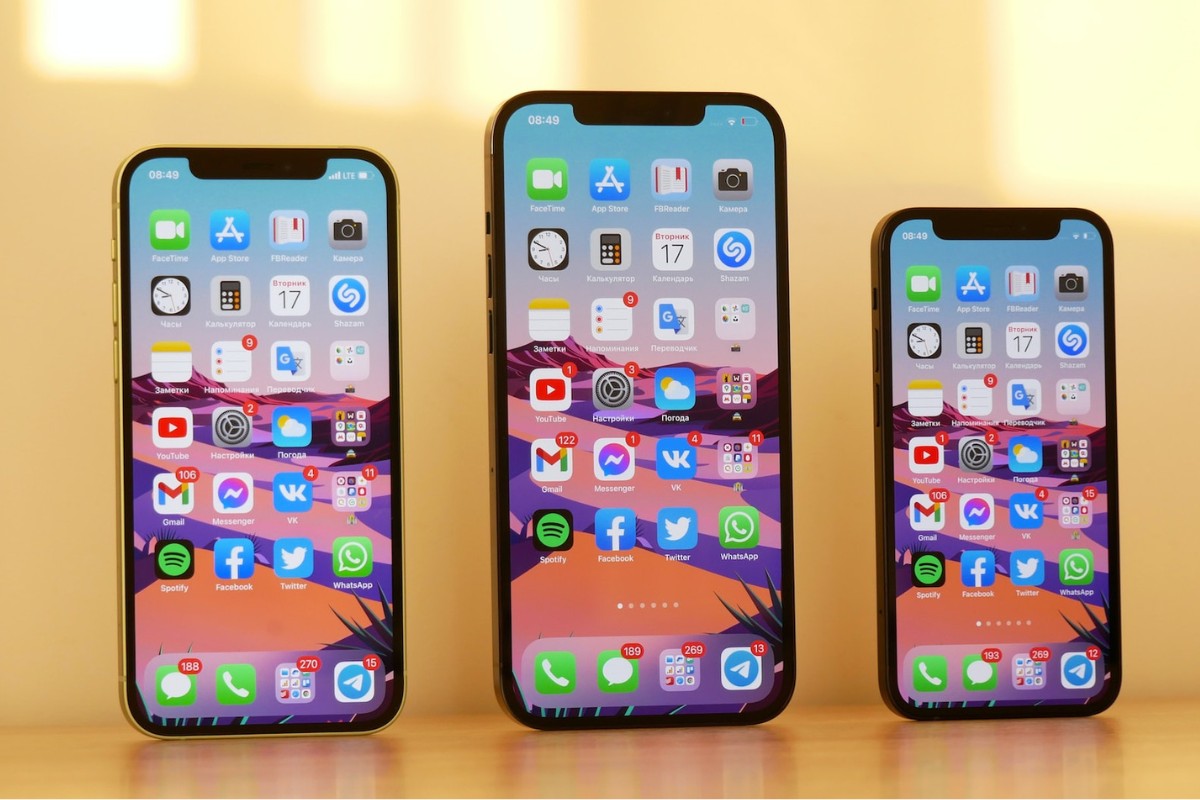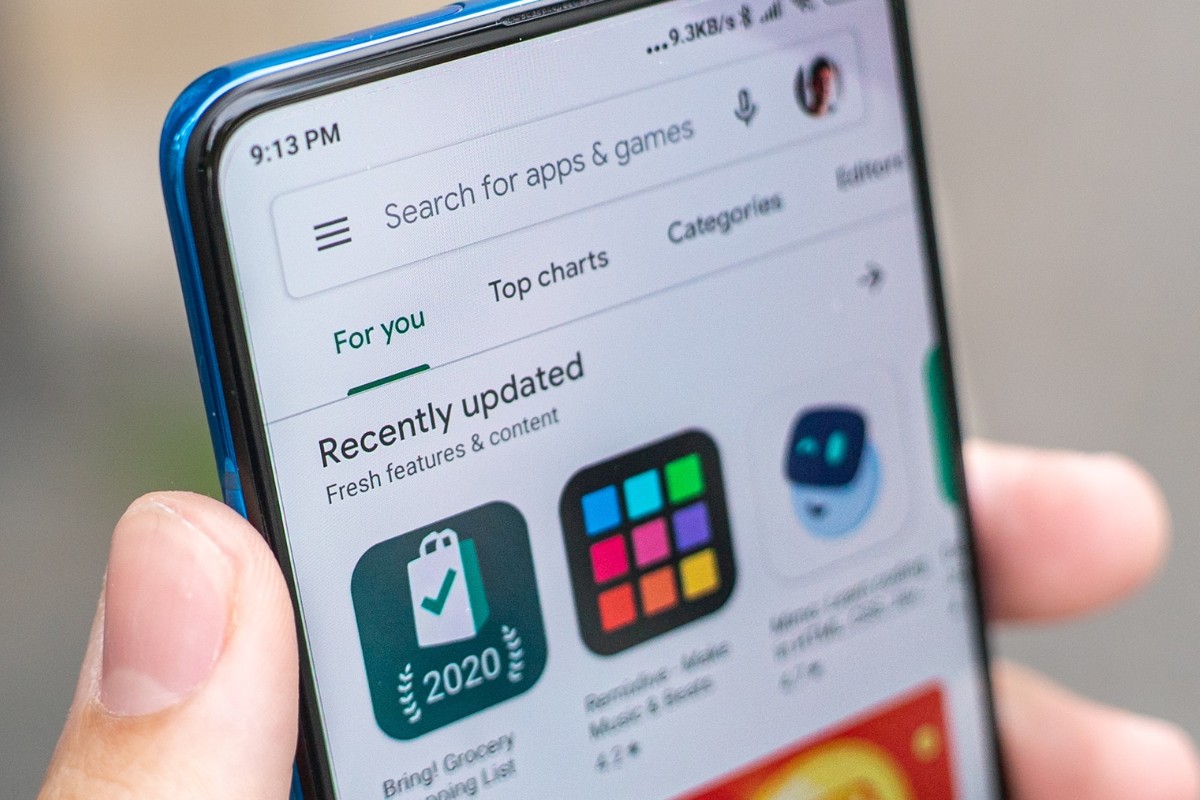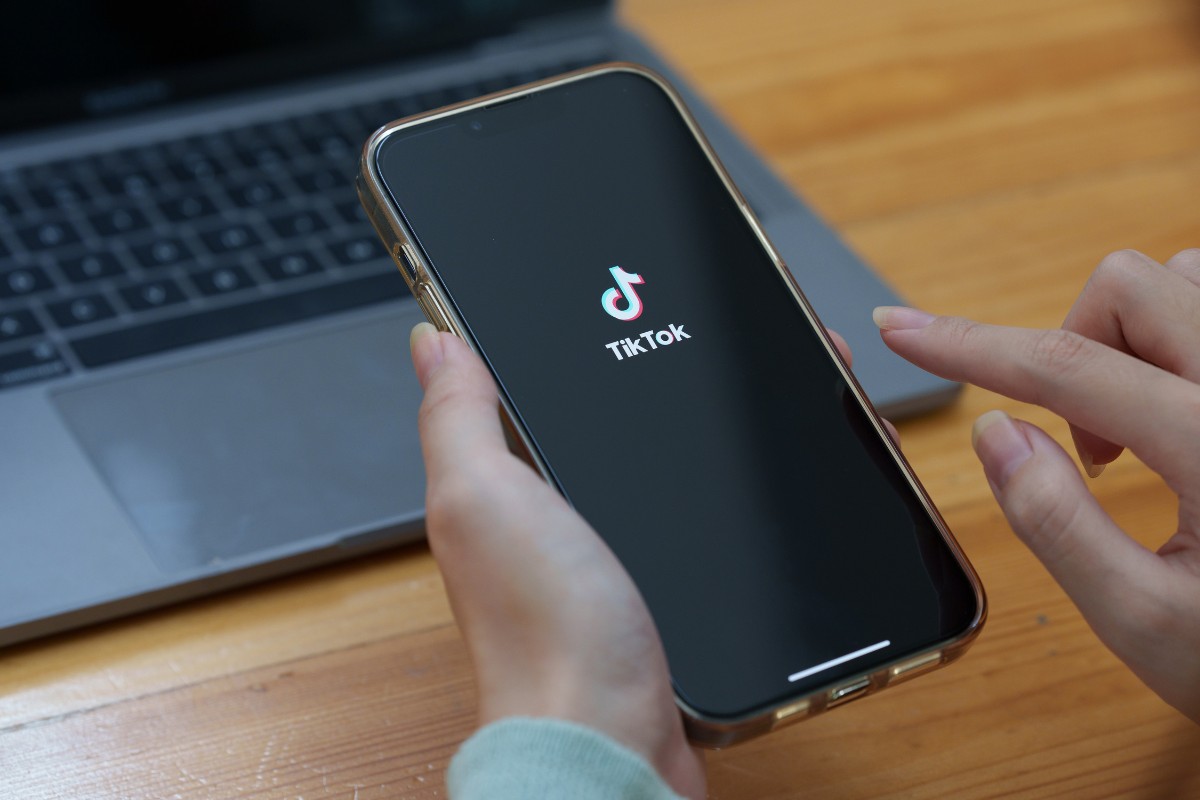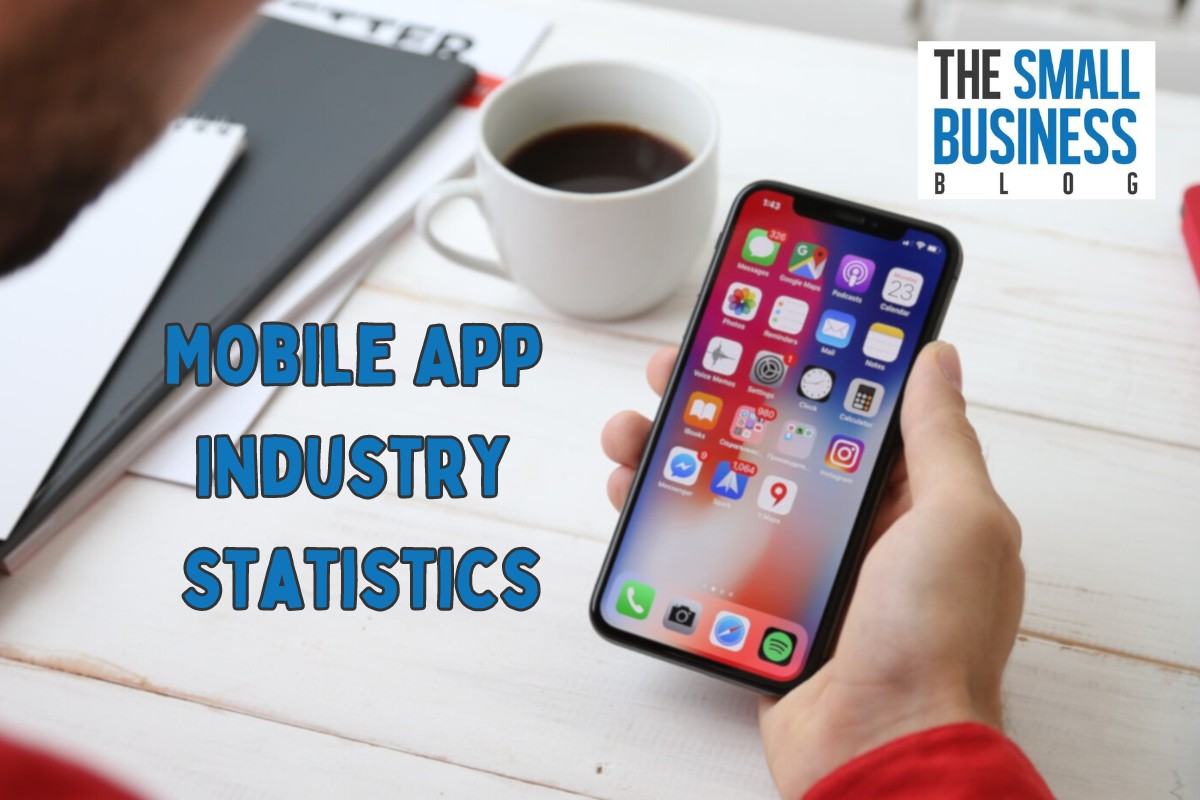Almost everyone relies on their phone 24/7, this is the reason why the mobile app industry has been one of the fastest-growing industries in the world.
As technology advances, users’ reliance on these apps also increases.
There is an app for almost everything, from social networking and dating, gaming, entertainment, and even business related apps.
With just one swipe, anyone from anywhere in the world can access a multitude of worlds through these apps.
In this article, we will dive into mobile app industry statistics, and how the industry has impacted people’s lives by looking at various statistical data.
Readers will find out about the number of apps available on different application stores, most used and downloaded apps, how much time we spend on them, and how much money is gained through these apps.
Post Contents
- 1 Key Statistics
- 2 General Mobile App Industry Statistics in 2024
- 2.1 1. As of today, there are 8.93 million applications available worldwide
- 2.2 2. 2 million applications were released in 2021
- 2.3 3. As of July 2023, 97% of all Android apps and 94.76% iOS apps are free to download
- 2.4 4. There are around 6.5 billion smartphone users globally.
- 2.5 5. 94% of smartphone owners are between the ages of 18 and 29.
- 2.6 6. In 2021, people spent 3.8 trillion hours using mobile applications
- 2.7 7. Every year, 255 billion applications are downloaded globally
- 2.8 8. Social media/communication applications have the largest shared usage among users in the United States
- 2.9 9. Users interact with an average of 30 apps every month
- 2.10 10. Between 2019 and 2020, 250 million applications were downloaded on a daily basis, totaling more than 91 billion downloaded apps each year
- 2.11 11. Apps accounted for 90% of user screen time.
- 2.12 12. 48.6% of internet users use social media to keep in touch with friends and family.
- 2.13 13. Communication apps are the most downloaded app category in Google Play Store.
- 2.14 14. The typical user spends 151 minutes each day using social applications.
- 2.15 15. With 672 million downloads, TikTok was the most downloaded app in the world.
- 2.16 16. In 2021, $320,000 was spent in app stores per minute.
- 2.17 17. Free apps generate 98% of all app income worldwide.
- 2.18 18. In 2021, Apple software Store customers paid $6 billion on software subscriptions, while Google Play Store users spent $2.5 billion
- 2.19 19. The mobile app industry is predicted to produce more than $935 billion in sales by 2023
- 2.20 20. By 2026, the worldwide e-learning industry is expected to be worth $399 billion.
- 3 Conclusion
Key Statistics
- There are 8.93 million apps available worldwide.
- Globally, there are 6.5 billion smartphone users.
- Mobile apps were used over 3.8 trillion hours in 2022.
- Users in the United States utilize social media and communication tools the most.
- 90% of user screen time was spent using apps.
- Each day, the average user uses social media for 151 minutes.
- There are 672 million downloads for TikTok.
- The average app store transaction in 2021 was $320,000 per minute.
- By 2023, it is anticipated that the mobile app market would generate more than $935 billion in revenue.
General Mobile App Industry Statistics in 2024

1. As of today, there are 8.93 million applications available worldwide
According to the latest mobile app industry statistics, a staggering 8.93 million mobile apps are already available worldwide.
A lot of app creators and developers are continuously on the hunt to provide their consumers with any app for their daily needs like the rise of several online banks, team productivity app, meditation app, health and fitness app, even journaling.
Intriguingly, neither the largest Google Play Store, nor Apple’s App Store had released the most numbers of new apps last year.
As of today, the Chinese smartphone application store accounts for 40% of app spending.
Along with the proportion of new app creation, the number of apps available in China’s app stores is rising fast.
Shockingly, you might never have heard of the top three app stores globally which released the highest number of new applications last year were Apkgk, Apkpureco, and Androidappsapk.
(Forbes.com)
2. 2 million applications were released in 2021
The mobile app industry is one of the sectors with the quickest growth rates worldwide.
In 2021 alone, over 2 million new apps were released.
According to reports, there have already been over 21 million applications and games combined across Google Play and Apple’s App Store.
Many people’s daily lives now include mobile applications inextricably.
The increased popularity of mobile applications is due to the rising adoption of mobile applications by businesses of all kinds.
The rising prevalence of smartphones and tablets have also contributed in driving this expansion.
These apps are made for a variety of purposes, including work, shopping, banking, entertainment, and communication.
The way we engage with the world around us has been changed by mobile applications.
(Apple Insider)
3. As of July 2023, 97% of all Android apps and 94.76% iOS apps are free to download
It has been evident that app publishers are progressively giving free apps a higher priority than premium apps as the mobile app industry expands.
Currently, 97% of all Android applications and 94.76% of all iOS apps are available for free download as of July 2023.
The appeal of free applications attracts users of apps in large numbers.
This trend has mostly been brought about by app users’ choices.
Whether you like it or not, most mobile app consumers like free apps over premium ones where you have to pay for the app before even installing and exploring it.
(Statista and Preapps)
4. There are around 6.5 billion smartphone users globally.
The way we live, work, and communicate has been completely changed by smartphones.
With 6.5 billion smartphone users by 2023, more than 85% of the world’s population today have access to the internet.
Nevertheless, this does not imply that 85% of people worldwide possess smartphones.
In fact, more than 80% of households in Germany now own a smartphone.
This is due to the fact that a person can own more than 1 smartphone.
As a result, the mobile app industry is currently valued at hundreds of billions of dollars and provides jobs for millions of people worldwide.
(Exploding Topics.com)
5. 94% of smartphone owners are between the ages of 18 and 29.

With 94%, the youngest adult age group ranging from 18-29 years olds has the largest percentage of smartphone users.
This information demonstrates the significance of cellphones for young audiences.
Most people belonging in this age group are those who are active in different social networking sites and are always on the lookout for the latest trends.
This age group uses smartphones to access entertainment, learn new things, stay in touch with friends and family, and purchase online.
Smartphones may assist young people in expanding their knowledge, honing their talents, and becoming ready for the future.
It indicates that young people have easy access to a wealth of knowledge and resources.
(Exploding Topics.com)
6. In 2021, people spent 3.8 trillion hours using mobile applications
According to recent data, in 2021, individuals spend more time using mobile apps than ever before.
This was another banner year for the digital economy as people spent more time online due to the COVID-19 pandemic.
More than five hours a day were spent on phones by users in Brazil, Indonesia, and South Korea, who were closely followed by those in Mexico, India, and Japan.
The typical American watched TV for 3.1 hours a day last year, but they spent 4.1 hours per day using mobile devices, according to the data collected by the Bureau of Labor Statistics.
According to a research organization, 7 out of every 10 minutes spent on mobile devices last year were spent on social, picture, and video applications like Facebook, TikTok, and YouTube.
(Forbes.com)
7. Every year, 255 billion applications are downloaded globally
Since 2016, there have been continual increases in the number of mobile app downloads globally; and in 2019, that figure surpassed 200 billion.
Consumers downloaded 255 billion mobile applications to their connected devices in the most recent measurement year, up from 140.7 billion in 2016 by more than 80%.
With mobile applications allowing people to do numerous activities, including communication, entertainment, shopping, banking, business, and finding employment.
The global mobile app industry is worth hundreds of billions of dollars and supports millions of jobs.
(Statista)
8. Social media/communication applications have the largest shared usage among users in the United States
Our lives have grown completely dependent on social media apps as our means of communication to people all over the world.
The United States has the third-largest social media readership globally as of 2022.
With a 90% social networking penetration rate, it is home to over 302 million users of social media.
Social media apps help us keep in touch with loved ones, remain informed about the news, and find entertainment.
They are also used at business and in the classroom.
For the majority of internet users in the United States, it is now a component of daily life.
(Statista)
9. Users interact with an average of 30 apps every month
A regular smartphone user is using an average of 9 mobile applications daily, with sums up to an average of 30 apps a month.
If an average consumer has installed more than 80 applications on their smartphones, they are only using a third of their apps on a monthly basis.
According to data and reports, most people are installing applications they never use or even open.
In reality, one in four apps downloaded are only used once and then never used again.
(Build a fire)
10. Between 2019 and 2020, 250 million applications were downloaded on a daily basis, totaling more than 91 billion downloaded apps each year

In recent years, smartphones have been more inexpensive and widely available for users to enjoy and explore.
Due to this, between 2019 and 2020, there were an average of more than 250 million app downloads each day, totaling more than 91 billion downloads annually.
According to predictions made by experts, this figure will keep rising and may top 500 million daily downloads by 2024.
The promising sophistication and utility of applications has also increased, which is another factor contributing to the rise in app downloads.
Today, apps may be used for a variety of purposes, from keeping in touch with friends and family to taking care of our money and health at the comfort of your own phone and home.
(Idea Usher)
11. Apps accounted for 90% of user screen time.
What’s a smartphone without applications? Individuals now connect with their gadgets mostly through various mobile apps.
Across the world, mobile and gaming applications accounted for more than 90% of the time Android users spent on their phones.
This means that most users only use their web or mobile browsers for about 7.5% of their total screen time.
(Influencer marketing hub)
12. 48.6% of internet users use social media to keep in touch with friends and family.
Even before the pandemic hit, people grew fond of using social media to communicate with other people.
But as the pandemic changes our normal lives, the majority of individuals now communicate with their loved ones primarily through social media.
A recent poll revealed that 48.6% of internet users use social media applications to connect and stay in contact with their loved ones throughout the world.
Social networking applications’ primary function is to enable smartphone-based social interaction, but they have evolved over time to be incredibly flexible.
Users may exchange photographs and videos, text, and have video chats with other people using this feature.
(Oberlo)
13. Communication apps are the most downloaded app category in Google Play Store.
Communication or social media apps have the highest download rate among all app categories available on Google Play store with 99.93% download rate.
The usage of communication applications is incredibly handy.
People can contact anyone from all over the world through them.
Aside from that, anyone can access them from any location with an internet connection.
Most messaging applications are free to use or have extremely reasonable subscription fees.
Text messaging, audio and video conferencing, file sharing, and group conversations are just a few of the functions that communication applications provide nowadays.
They became a flexible instrument for both interpersonal and business communication.
Users can establish new connections and maintain existing ones with the help of communication applications.
They also provide us a venue to communicate with others about our views and opinions.
(Build a fire)
14. The typical user spends 151 minutes each day using social applications.
Social media has become an essential part of our daily lives, and we are devoting a significant amount of time to using it.
Internet users worldwide spent an average of 151 minutes a day on social media apps as of 2022.
These apps are used by people for a number of purposes.
Aside from communication, users like finding humorous or interesting stuff and sharing it with friends, but they mostly use social media to keep up with friends who are interested in current events.
(Statista)
15. With 672 million downloads, TikTok was the most downloaded app in the world.

TikTok was the most downloaded mobile app globally in 2022 garnering 672 million people downloaded the sharing app for short videos.
Originally designed as a platform primarily for sharing brief videos, particularly those featuring dance routines and lip syncing, TikTok has evolved into a comprehensive video service catering to a wide range of users.
TikTok was officially launched in 2017 and is currently owned by the Beijing-based digital startup ByteDance.
It is anticipated that by 2023, TikTok will boast a user base exceeding 834 million worldwide, with the United States standing out as one of its prominent markets.
(Statista)
16. In 2021, $320,000 was spent in app stores per minute.
Over $320,000 was spent in the app stores every minute in 2021, an increase of nearly 20% over prior records in 2020, demonstrating how consumers are shifting their focus and financial resources to mobile.
Mobile technology has advanced and become more powerful over the years.
This implies that a greater range of activities, including shopping, banking, and entertainment, may be performed through them.
The transition to mobile is significantly affecting businesses.
Businesses must make sure that their websites and applications are responsive to mobile devices.
They must also create marketing plans that target consumers of mobile devices.
(Data.ai)
17. Free apps generate 98% of all app income worldwide.
There are a lot of reasons why consumers prefer free apps over premium apps.
First is the cost.
Free apps allow you to explore and use the application without thinking about any fees.
Second, low risk.
If a consumer downloaded a free app and didn’t like it, they can instantly delete it.
While users who purchased an app will have to second guess whether it is okay to waste money on an app they didn’t enjoy the first time.
However, according to reports, paid apps make consumers more engaged due to the fact that they wouldn’t waste a penny on something they will never use.
(Build a fire)
18. In 2021, Apple software Store customers paid $6 billion on software subscriptions, while Google Play Store users spent $2.5 billion
Compared to Google and other rivals, Apple’s App Store often sees the most money spent on applications, subscriptions, and in-app purchases.
According to statistics, from $10.3 billion, subscription expenditure on the several app stores increased 31% in just over a year.
Even with this growth, Google Play revenue is still far lower than that of the Apple App Store.
Similar findings are shown when looking at US-only expenditure, with the App Store earning $6 billion compared to Google Play’s $2.5 billion.
(Apple Insider)
19. The mobile app industry is predicted to produce more than $935 billion in sales by 2023
There are multiple ways on how someone can make money through applications.
This is the reason why industry experts predict that the worldwide mobile app market will produce more than $935 billion in sales by 2023, with a compound annual growth rate of 19.5%.
The in-app purchase model may be used by almost all sorts of mobile apps to generate income, although mobile games and e-commerce apps are where it’s most common.
The $380 billion in user spending worldwide and 48.2% of mobile app earnings are also attributed to in-app purchases.
(Appetiser.com)
20. By 2026, the worldwide e-learning industry is expected to be worth $399 billion.

By 2026, it is predicted that the worldwide e-learning industry would be worth $399 billion.
Recently, due to the COVID-19 pandemic, e-learning apps have also gained popularity recently.
Schools, including universities were forced to close and left with little choice but to complete their education through e-learning applications.
In addition, there are a lot of people who are interested in learning and impacting knowledge and information about anything.
The accessibility and convenience of e-learning apps have given them the freedom and chance to learn anything anywhere.
E-learning apps are also perfect for those who are busy or have other obligations like their jobs, business, etc.
Since most e-learning apps can be customized to match the needs of each individual student.
The flexibility it offers lets pupils study when, where and how they choose to study according to their learning strategies.
(Hash Studioz)
Conclusion
Smartphones have invaded our daily lives, as evidenced in the latest Mobile App Industry Statistics.
Almost everyone is glued on their phones 24/7.
And a smartphone without apps, is merely a blank space.
This is one of the reasons why the mobile app industry has become one of the fastest growing industries worldwide.
There is an app for almost everything you can think of.
Language learning, communicating, self-expression, money-making, business, team meetings, e-learnings, and even shopping.
That’s why in 2023, experts have predicted that the mobile app industry will produce over $935 billion revenue.
With its convenience and versatility, consumers have become dependent on these mobile applications.
People use it in various ways and it fills and creates a life full of enjoyment and contentment.
With the mobile app industry’s popularity as of today, there is no way that the industry will become slower in the coming years.
Instead, it might become the fastest growing market globally sooner than we expect it to be.






























